Setting up a new fish tank often involves numerous considerations, and determining the right amount of gravel for the substrate is one of them. In this comprehensive guide, we’ll uncover the straightforward formula to calculate the ideal amount of gravel for your aquarium, whether it’s a 5-gallon tank or a 125-gallon behemoth. Armed with just a ruler and a basic calculator, we’ll navigate through the intricacies of substrate depth and tank dimensions to ensure a perfect balance for your aquatic environment.

Fortunately, the formula that tells how much gravel you’d need for your aquarium is not complicated and I can help with that.
All you need for this to work are a ruler and a basic calculator.
A substrate that’s around 2 inches deep will suffice even in planted aquariums, so that’s what I recommend going for if you’re new to this. Also, the gallon capacity of your tank is not relevant when calculating the needed gravel but its dimensions are.
Following the formula, we can calculate how many pounds of gravel would be needed for 2 inches of substrate depth for each of the popular standard fish tanks:
- 5-gallon tank (18.9 liters) – 17 lbs (7.7 kg) of gravel
- 10 gallon “Leader” tank (37.9 liters) – 28.4 lbs (12.9 kg) of gravel
- 10 gallon “Long” tank (37.9 liters) – 27.5 lbs (12.5 kg) of gravel
- 20-gallon “Long” tank (75.7 liters) – 50 lbs (22.7 kg) of gravel
- 20 gallon “Tall” tank (75.7 liters) – 40.5 lbs (18.4 kg) of gravel
- 29-gallon tank (109.7 liters) – 50 lbs (22.7 kg) of gravel
- 40-gallon “Breeder” tank (151.4 liters) – 88 lbs (39.9 kg) of gravel
- 55-gallon tank (208.2 liters) – 82 lbs (37.2 kg) of gravel
- 75-gallon tank (283.9 liters) – 119 lbs (54 kg) of gravel
- 125-gallon tank (473.2 liters) – 179 lbs (81.2 kg) of gravel
Ways to calculate how much gravel you need for your new fish tank?

Whether you have a 10- or a 20-gallon aquarium is not important when calculating how much gravel you need for your new fish tank setup.
That’s because even standard fish tanks come in different shapes and have varying dimensions.
For example, there’s a 20-gallon “Long” tank and a 20-gallon “Tall” tank.
Both hold 20 gallons of water but have completely different bottom footprints.
The dimensions of your new aquarium’s bottom is what really matters here.
To learn the proportions of a tank you can either grab a ruler and measure them or you can use my resource page about fish tank dimensions. In it, I’ve listed the measurements of all the standard-shaped tanks and their gallon capacities along with the most popular irregularly-shaped ones.
Find the tank that you have or want to get and check out its width and length.
From here on there are two steps you need to take:
- Write the fish tank’s length and width down.
- Multiply the dimensions to find the tank’s bottom footprint in square inches or centimeters and write the answer down.
So with that out of the way, we can move to the formulas.
Generally speaking, there are three main ways you can calculate how much gravel an aquarium needs:
- By using the gravel’s weight. This is the most generalized method and is used most of the time;
- By using the gravel’s volume if it’s listed on the bag it comes in. This is the most accurate methodology for calculating the needed amount but most brands don’t list volume;
- By measuring the bag’s volume after manually flattening it on the ground. This method is a bit more practical but can be somewhat inaccurate and you need to physically have the bag in front of you.
Let me explain each calculation method and the formulas behind them in detail while sharing their pros and cons:
1. Calculating aquarium gravel by weight
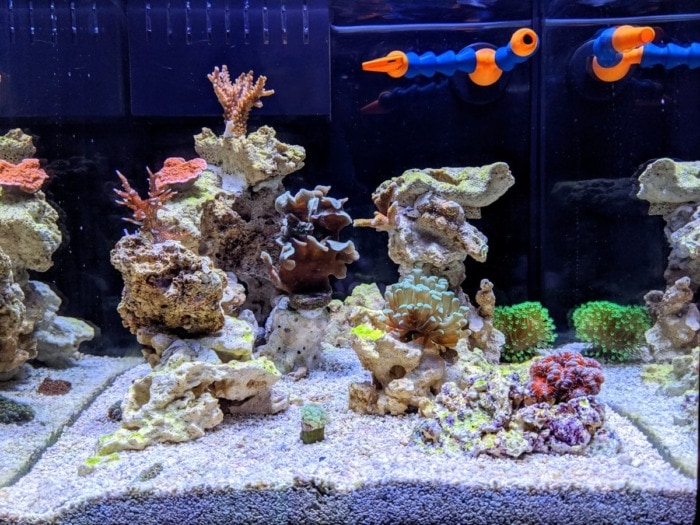
Unfortunately, most brands of aquarium gravel list the weight of their product instead of its volume.
You’d usually see how many pounds the bag weighs but that’s about it.
Why this has become a popular practice among manufacturers is beyond me.
Moreover, the label would usually have some vague directions like:
“Use 1 to 2 lbs. of gravel per gallon.”
For the reasons I listed above, such directions can be quite misleading and, sometimes, plain wrong.
If someone tells you to just use “X” pounds of gravel per gallon then they’ve either never done it or don’t know how density works.
That’s because it’s very likely we’ve initially set our minds on a particular substrate depth.
Different aquascapes and setups require different depths for our gravel beds.
Author’s note: A freshwater planted tank would typically require no less than 2 inches of gravel. Even if you just want artificial plants in your tank, 2 inches depth would work best to hold them. Also, that depth is ideal for fish that like to bury themselves in the substrate such as some species of small plecos or eels.
Also, keep in mind that the formula I’m about to share works best with classic pea aquarium gravel and Dolomite gravel. Each brand of gravel has varying weights compared to its volume, depending on the size and material of the grains.
That being said, here’s the formula for calculating the needed gravel for a fish tank based on weight:
( Tank Length in inches × Tank Width in inches ) ÷ 15 = pounds of gravel for 1 inch of average substrate depth
If you need to reach the classic 2 inches of gravel depth, then multiply the answer of the above formula by two.
Anyway, if you’re using the Metric system then the formula looks like this:
( Tank Length in centimeters × Tank Width in centimeters ) ÷ 211 = kg of gravel for 2.5 cm of average substrate depth
Let me follow up with a practical example:
Let’s suppose I have a standard 10-gallon aquarium with 16 inches of length and 8 inches of width.
I’d like to cover that tank’s bottom with 2 inches of gravel.
I’d multiply the length and width which gives me 16 × 8 = 128 square inches of bottom footprint.
I’d then divide 128 by 15, as in the formula above, and get ~8.53 pounds of gravel as an answer.
However, since I want 2 inches of substrate depth on average, I’d go ahead and multiply 8.53 by 2, which equals ~17.07.
Therefore, I have learned that my standard 10-gallon tank needs roughly 17 pounds of gravel.
Similarly, a “Long” 20-gallon tank with standard dimensions would require around 50 pounds of gravel for 2 inches of substrate depth.
But what do you do if you want to achieve a sloping substrate?

Let’s say I wanted my aquascape to have a slope with 4 inches of depth in one end, tapering to 2 inches on the other end.
To find out the average gravel depth of this setup I’d add 4 and 2 and divide the result by the number of ends, which is 2.
This gives me (4 + 2) ÷ 2 = 3 inches of substrate on average.
2. Calculating aquarium gravel by volume
It’s very rare to see a brand of aquarium gravel being listed in Liters or cubic inches on the bag. Only aqua soils used for planted tanks are consistently listed in Liters.
That’s unfortunate because the Liter is a measurement of volume:
1 liter equals a volume of 1 cubic decimeter, which is 1000 cubic centimeters or 61.02 cubic inches.
Doing the calculations in volume is the easiest and most accurate way of determining the amount of gravel an aquarium needs.
The formula to do so is as follows:
( Length of tank × Width of tank × the desired average depth of substrate ) = The volume of gravel in either cubic inches or cubic cm
You then divide the result by how much gravel each bag holds in cubic cm or liters and get how many bags you would need.
A practical example:
Say, I have a 20-gallon “Long” tank that has a bottom footprint of ( 30.25″ × 12.5″ ) = 378.125 square inches.
I want to cover the bottom of this tank with 2 inches of gravel so I multiply 378.125 by 2, which gives me 756.25 cubic inches.
Say, one bag of my gravel of choice holds 550 cubic inches of the substrate according to the label.
I then go ahead and divide 756.25 by 550 which tells me that I need approximately 1.38 bags of gravel for my 20-gallon tank.
So basically two bags have me covered.
The same methodology applies if you use the Metric System and calculate in centimeters.
The only difference is that, in the end, you convert liters to cubic cm ( 1 liter = 1000 cubic cm ).
3. Measuring the volume of the gravel on-site by using a ruler
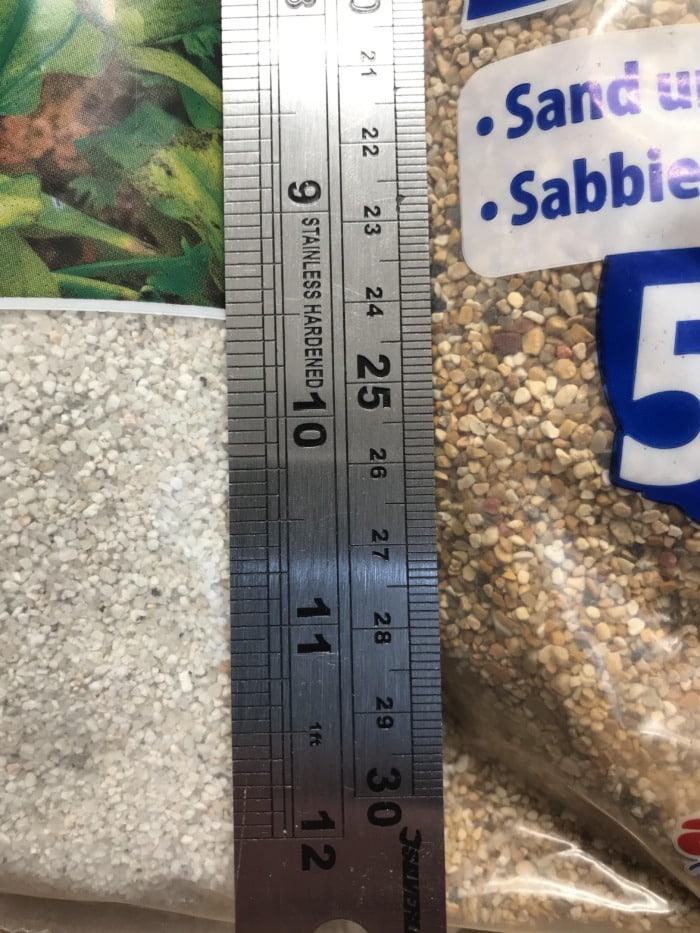
Some may find this method impractical but there are scenarios that justify it.
The method itself is essentially you arming yourself with a ruler and heading over to the pet store.
You already know the area of your tank’s bottom and the depth of gravel you want it to have:
- You arrive at the store and choose a brand of gavel that you like.
- You proceed to carefully flatten the bag on the floor until it has the desired substrate height (depth).
- After that, you measure its length and width and calculate how many bags you’d need to cover your tank’s bottom.
For example, you want 2 inches of gravel depth.
You level the unopened bag and even it out until it has a height of 2 inches everywhere.
You measure the bag’s length and width and multiply them to get its area.
You then divide the area of your aquarium’s bottom by the area of the bag to estimate how many bags you’d need.
This method is typically useful when you have no idea what kind of substrate you want and have the time to visit the pet store yourself.
Though there’s some room for small errors, this also works with aquarium sand and aqua soils.
You can try using an online gravel calculator
Fortunately there are some more sophisticated aquarium gravel calculators out there. They have their own methods of calculating aquarium gravel and most of them can be a bit off though. But if you want to try one you can.
For example, this one by Aqua-Calc takes into account the specific weight of quality gravel brands such as CaribSea Eco-Complete.
This calculator’s limitations, however, are that it can only calculate gravel in rectangular aquariums.
Let me know in the comments if this gravel calculator was correct for your tank if you end up using it!
What are the benefits of having gravel in your fish tank?
There are 4 main benefits when it comes to having a gravel substrate in a fish tank:
- It provides a lot of surface for beneficial bacteria to develop
- It’s looks really good
- It helps with planting plants which in turn can keep the fish tank water clean
- Gravel requires little maintenance compared to other, more demanding, aquarium substrates
Gravel pebbles have a lot of surface area to them and are generally porous.
This provides home to the beneficial nitrifier bacteria that we need in our fish tanks to keep them cycled.
On top of that gravel allows water to flow through it, down to the bottom of the tank.
This prevents the buildup of toxic gasses and harmful bacteria underneath it.
Because of this it is also very easy to vacuum gravel and remove uneaten fish food and other nasties.
Finally, gravel looks great in any fish tank, and the finer grits hold down aquatic plants well.
But when should I change my gravel?
The good thing about gravel is that, unlike nutrient rich aqua soils, it is chemically stable and doesn’t break down.
This means there’s no need to change it unless you want a different one.
Gravel is basically a future-proof substrate for any aquarium.
If you like how yours looks then you don’t need to change it.
Tips for cleaning gravel and putting it in a fish tank?
Almost every substrate out there should be cleaned before you put it in your aquarium.
The best way to clean gravel is to rinse it in a bucket under running water.
Rinse as long as needed – different kinds of gravel will need different amounts of rinsing.
Rinse until the water in the bucket is crystal clear.
After the gravel is clean you can put it in your fish tank, but do that before you fill it with water.
Conclusion
Don’t overthink it, arm yourself with a calculator and just pick whichever method suits you best.
Figuring out how much gravel your new aquarium needs shouldn’t be complicated.
Leave me a comment below if you need more answers.






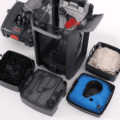

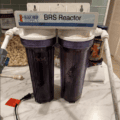
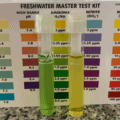


1 thought on “How Much Gravel do I Need for my Aquarium? (Calculator Tips)”